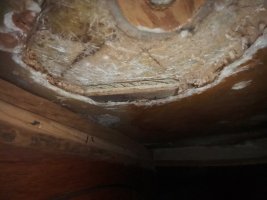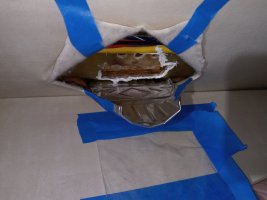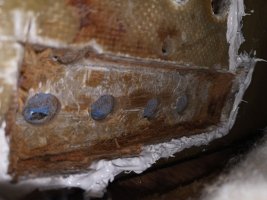I've done (and am still doing) many small deck core repairs. Never used a moisture meter. If you are thinking of using one, you likely have already encountered signs of moisture: drips, leaks, discoloration, rusted fasteners, soft spots, bulged spots (after freezes), mold. Only surefire way to determine that I've found is to start drilling 1/4" to 3/8" holes in the core from below. You'll know right away if the drilled wood chips are dry, damp, or soaked. Drill in a grid pattern with holes spaced 4-6" until you know you've found dry wood.
Dry:
View attachment 45560View attachment 45555 (under center dorade vent railing)
Wet:
View attachment 45559 View attachment 45557 View attachment 45558
(stanchion base above V-berth)
If you mistakenly drill holes into dry core, just re-fill with thickened epoxy using a syringe. At least you'll know for sure.





